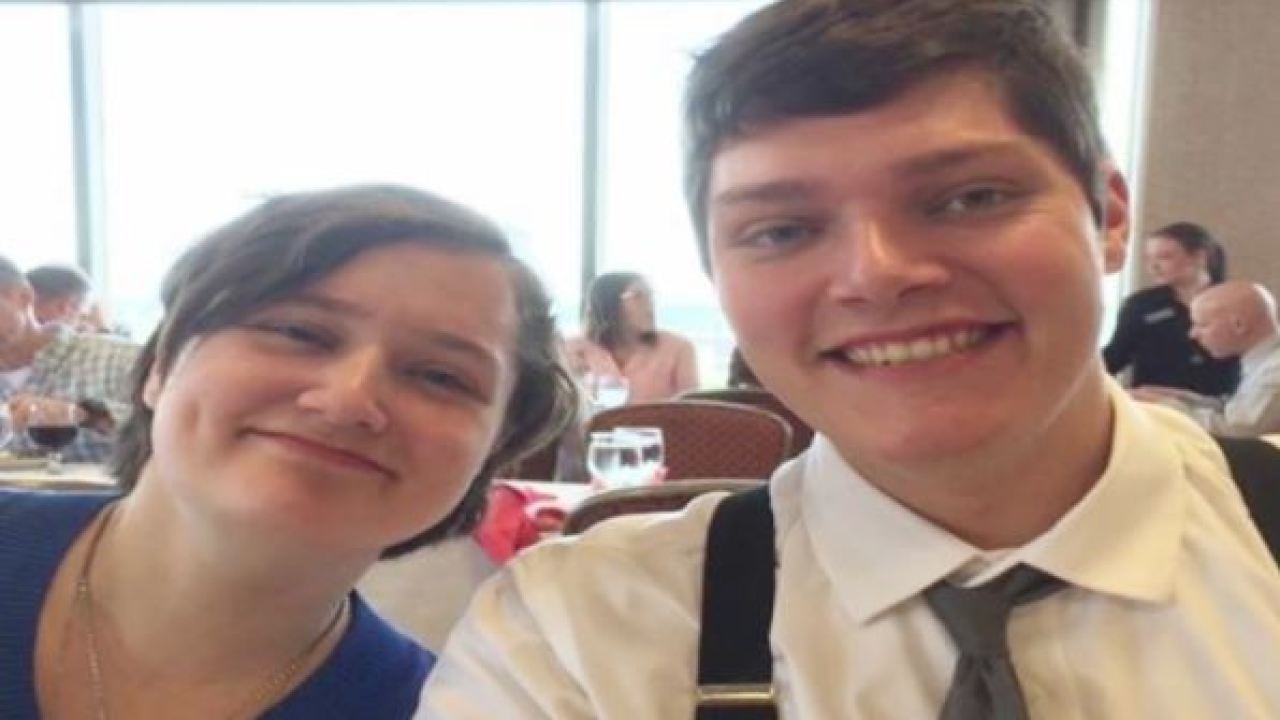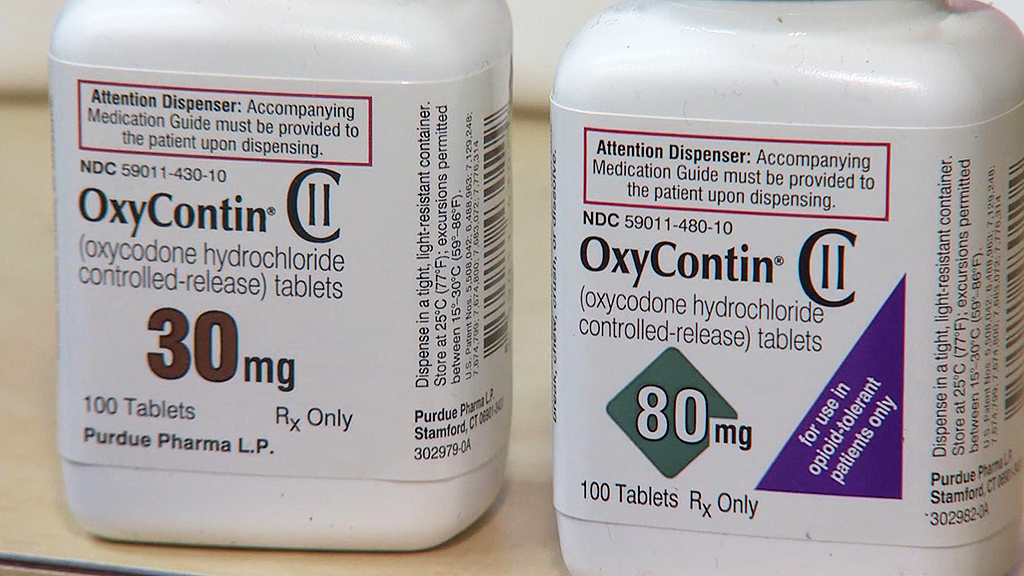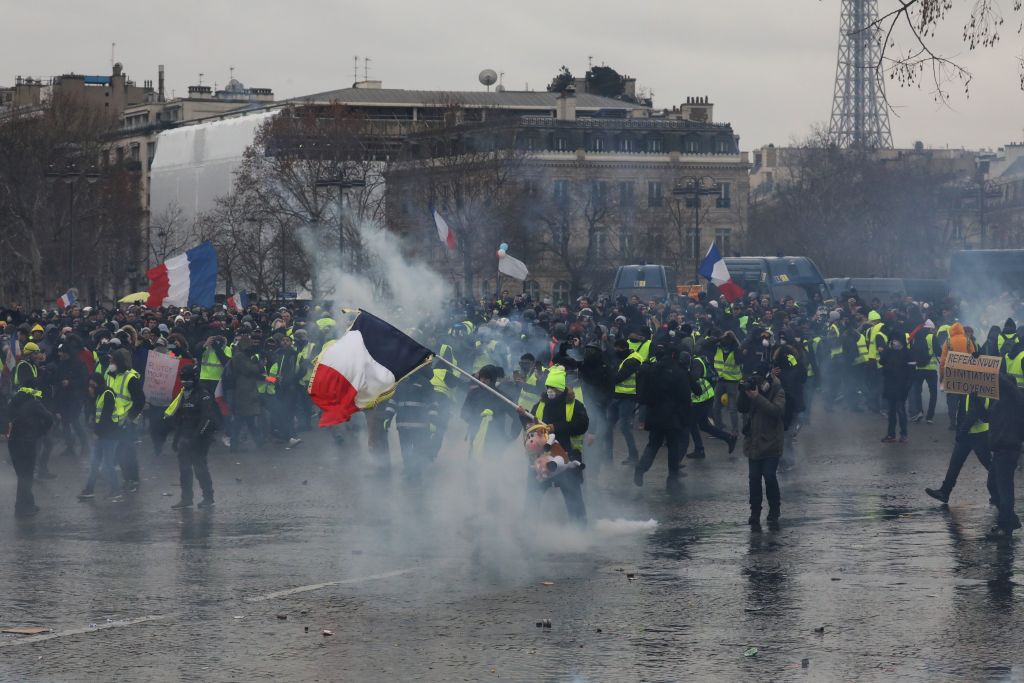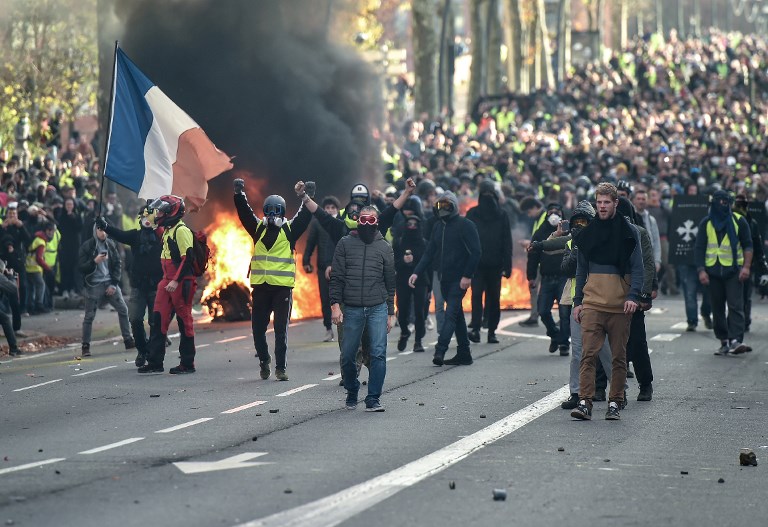
U.S. District Judge Indira Talwani sentenced actress Felicity Huffman to two weeks in prison for paying $15,000 to get her daughter into college by having someone correct her answers on the SATs. Huffman also received a $30,000 fine and 250 hours of community service. She had pleaded guilty to conspiracy to commit mail fraud and honest services mail fraud. Her lawyers asked for no jail time, one year of probation, 250 hours of community service and a $20,000 fine. Her sentence likely means other parents who’ve pleaded guilty in the nation’s college admissions scandal will spend time behind bars. It could also mean that others who made significantly larger payments will end up with more lenient prison terms than prosecutors say are fair.
During Huffman’s sentence she told the courtroom she was deeply ashamed. Judge Indira Talwani said, “Ultimately, you knew it was fraud, it was not an impulsive act. Trying to be a good mother doesn’t excuse this.” Talwani added that the sentence she handed down was “the right sentence here,” but also told Huffman “You can rebuild your life after this,” the judge said. “You’ve paid your dues.” Huffman will report to prison in six weeks, on October 25. Where she’ll serve her sentence has not been announced and will ultimately be decided by the Bureau of Prisons.
Fifty-two people have been charged as part of the college admissions bribery scandal known as “Varsity Blues.” Of the 52 people charged in the scandal, 35 are parents. Fifteen, including Huffman, have pleaded guilty in deals with prosecutors, while 19, including actress Lori Loughlin, have pleaded not guilty and are preparing for trial. Rick Singer, the mastermind of the nationwide college admissions scandal, was paid to have cheat on their children’s SAT or ACT while others paid substantially more to get their children falsely tagged as athletic recruits as a way into prestigious schools. Huffman is the first parent to be sentenced and prosecutors sought one month prison time for Huffman. Prosecutors are pushing for longer sentences for other defendants — more than three years in some cases.
The next parent to be sentenced in Boston federal court is Devin Sloane, CEO of Los Angeles-based waterTALENT. He pleaded guilty to paying $250,000 to Singer’s sham nonprofit to falsely designate his son as a water polo player to gain acceptance into the University of Southern California. Prosecutors are seeking one year in prison for Sloane. Sloane’s hearing is scheduling for September 24th. Two days later, Stephen Semprevivo, a former executive at Cydcor, also based in Los Angeles, will be sentenced. He pleaded guilty to paying $400,000 to Singer to get his son admitted into Georgetown University as a fake tennis recruit. Prosecutors have asked that Semprevio receive 15 months in prison.
Both upcoming cases will reveal whether the judge treats the recruiting scheme the same as the testing scam, and whether she comes down harder on parents who paid more to Singer. Longer sentences could be in store for parents who participated in the recruitment scheme because it had a more “direct effect” on the admissions process than test tampering. Such parents, including Loughlin, accused of paying $500,000 to Singer, have argued they made “legitimate donations” to Singer’s nonprofit, which they said had a history of donating to colleges.
Prosecutors have argued parents who paid more money to Singer should receive longer prison terms. An order by the judge released hours before Huffman’s sentencing could cap sentences at six months for parents regardless of their how much they paid. Judge Talwani ruled against the government’s request to sentence defendants under the federal commercial bribery statute, which allows more severe sentences depending on the amount of money paid. Instead, all sentences will be based on fraud statute guidelines, which recommend six months or less in prison for the offense.
Read more

Thirteen Hours after El Paso’s horrific attack, in the early hours of Sunday morning, a gunman opened fire with a high-caliber rifle outside a bar in a popular downtown entertainment district in Dayton, Ohio, killing nine people and wounding 27 others. The attack took less than a minute and police killed the suspect at the scene. The shooter was identified as 24-year-old Connor Betts. The victims were mostly in their twenties and thirties, and one of the victims, Megan Betts, was the gunman’s sister.
According to the timeline of the shooting released by police, Betts, his sister, Megan Betts, and a friend arrived together to the Oregon District of Dayton at 11:04 p.m. Saturday and went to a bar named Blind Bob’s. Betts split off from the two and went to another bar called Ned Peppers at 12:14 a.m., and after 30 minutes he went back to the vehicle in a parking lot to gather the weapon and change clothes, Biehl said. With a weapon in his backpack, Betts walked toward an alley and began firing into Blind Bob’s at 1:04 a.m., authorities said. Based on a timeline pieced together from security cameras, police engaged with him after less than 20 seconds and Betts was killed 32 seconds after his first shot.
Police say Betts knew that his sister and friend were still in the area when he opened fire because they had been texting and talked in a phone call. Investigators are still divided on whether he intentionally sought out and killed his sister and injured the friend. Authorities said they do not know his immediate motivation — why this location at this time and these victims but they have uncovered a violent mindset. Police say Bates has a history of threatening women, and former classmates say he had a “kill list” and a “rape list” in high school. Investigators have gathered evidence showing he had an obsession with violence and had expressed a desire to commit a mass shooting.
Comments from police, memories from former classmates and posts on his apparent Twitter account show he had a deep interest in violence — as well as the easy access to high-powered guns that is the common thread of all American mass shooters. Two former high-school classmates stated that the gunman was suspended from Bellbrook High School after he made lists of other students he wanted to kill and rape. The “hit list” was discovered in early 2012 and resulted in a police investigation. The suspect’s high-school girlfriend stated that at the time they dated, he had complained of visual and auditory hallucinations, and psychosis, and was afraid of developing schizophrenia.
Authorities say the rifle used in the shooting was ordered online from Texas and transferred to the suspect at a local firearms dealer. Police also found a shotgun, acquired from a separate local firearms dealer, in the shooter’s nearby vehicle. During a search of the gunmen’s home, police found writings that showed interest in killing people and a preliminary assessment did not indicate he had a racial or political motive.
The gunman’s friend, Ethan Kollie, was arrested on federal firearms charges for allegedly possessing a firearm while using or addicted to a controlled substance and falsely filling out a firearms application form. Authorities also accused Kollie of providing Betts with the body armor and a 100-round double-drum magazine used in the Dayton attack. In an interview with federal agents, Kollie said he had done hard drugs, marijuana and LSD with Betts several times a week between 2014 and 2015, the affidavit says. Prosecutors emphasized that Kollie did not intentionally help plan the shootings.
Read more

New York State announced a sweeping lawsuit against members of the Sackler family, the owner of Purdue Pharma, which makes OxyContin, the highly addictive drug at the center of the opioid epidemic. A group of over 500 cities, counties and Native American tribes have filed suit against Purdue and 8 members of the Sackler family, which founded and owns Purdue Pharma, for their role in creating “the worst drug crisis in American history” by lying about the dangers of the opioid painkiller OxyContin and deceitful marketing of the drug.
New York Attorney General Letitia James accused the Sacklers of masterminding a scheme that “literally profited off of … suffering and death.” While announcing the suit, James said “And as Purdue sold more and more opioids, the Sackler family transferred more and more wealth into their personal accounts. And as the lawsuits have piled up against the Sackler family and Purdue for their roles in this crisis, they continue to move funds into trusts and, yes, offshore accounts.” The suit states that the Sackler family is worth an estimated $13 billion, partly due to the more-than-decade-long marketing campaign to boost sales of OxyContin. At the same time, the economic cost to the U.S. for the opioid epidemic was $504 billion in 2015, the lawsuit contends. Former Purdue CEO Richard Sackler allegedly touted the drug for unapproved uses and that Purdue workers were instructed to tell doctors the painkillers were not addictive and could help an “enhanced lifestyle,” according to the suit.
Portions of a lawsuit filed by the state of Massachusetts against Purdue that were made public, allege that the company, the Sackler family, and company executives misled prescribers and patients as they aimed to blanket the country with prescriptions for their addictive medications. Five years after the drug was released to the market, questions were raised about the risk of addiction and overdoses that came with taking OxyContin and opioid medications. Richard Sackler outlined a strategy that critics have long accused the company of unleashing: divert the blame onto others, particularly the people who became addicted to opioids themselves. In a February 2001 email he wrote “We have to hammer on the abusers in every way possible. They are the culprits and the problem. They are reckless criminals.” The Massachusetts suit claims “By their misconduct, the Sacklers have hammered Massachusetts families in every way possible and the stigma they used as a weapon made the crisis worse.” The complaint reveals that since 2007, Purdue has sold more than 70 million doses of opioids in Massachusetts for more than $500 million. “And the stigma they used as a weapon made the crisis worse.”
Purdue and the family denied any wrongdoing in a statement “The latest legal action is part of a larger effort to “single out Purdue,” and fault it for the entire crisis. Purdue Pharma and the individual former directors vigorously denies the allegations in the complaint and will continue to defend themselves against these misleading allegations,” the statement said.
The state of Oklahoma recently reached a $270 million agreement with Purdue Pharma—settling a lawsuit that claimed the company contributed to the deaths of thousands of Oklahoma residents by downplaying the risk of opioid addiction and overstating the drug’s benefits. More than $100 million of the settlement will fund a new addiction treatment and research center at Oklahoma State University. The settlement is the first Purdue has made amid more than 2,000 pending lawsuits connecting its painkiller OxyContin to the opioid crisis-which U.S. government data estimates is responsible for nearly 50,000 deaths per year.
Read more

Grammy-nominated rapper 21 Savage, was detained by agents from Immigration and Customs Enforcement on February 3, 2019. ICE says British-born Shéyaa Bin Abraham-Joseph, better known by his stage name 21 Savage, overstayed his visa after coming to the U.S. at the age of 12 in 2005. Lawyers for the rapper say he is being wrongfully detained and that his new visa application is currently pending.
Abraham-Joseph, 27, faces deportation after he was turned over to ICE by cops targeting his cousin, rapper Young Nudy. Nudy, whose real name is Quantavious Thomas, was stopped by DeKalb County police and agents with the federal Bureau of Alcohol, Tobacco, Firearms and Explosives in a targeted stop. Abraham-Joseph, happened to be riding with Thomas and has not been charged with any crime in connection with the stop.
ICE alleges that he entered the US legally in July 2005, when he was a minor but subsequently failed to depart under the terms of his nonimmigrant visa. ICE says Abraham-Joseph became unlawfully present when his visa expired in July 2006. “Mr. Abraham-Joseph is presently in ICE custody in Georgia and has been placed into removal proceedings before the federal immigration courts,” ICE said in a statement. “ICE will now await the outcome of his case before a federal immigration judge to determine future actions.”
His detention has provoked outrage among his fan base and has shone a spotlight on immigration proceedings. An attorney for Abraham-Joseph said his representatives are working to secure his release. “We are working diligently to get Mr. Abraham-Joseph out of detention while we work with the authorities to clear up any misunderstandings.” His lawyers say that he was “left without legal status through no fault of his own” at the age of 13 and are arguing that his detention is based on “incorrect information about prior criminal charges. They say that ICE is now refusing to release him on bond of any amount, despite the fact that he has a pending U-Visa application, and that he has relief from removal available to him.” A U-Visa is available to crime victims who are willing to provide ‘helpful information’ to law enforcement. His lawyer said that the feds have known his client’s address since he filed for the U-Visa in 2017 and questioned why they took no action until this weekend.
Abraham-Joseph, who has collaborated with some of the music world’s hottest stars, including Drake, Cardi B, Travis Scott and Post Malone, has had numerous encounters with the law and has never sought to hide his status from the authorities, his legal team say. In 2014 he was convicted of drug possession in Fulton County In 2016, he called the cops to report that someone had kicked in the door of his 10th Street condo, taking a Glock handgun, a Rolex and other jewelry, a Louis Vuitton bag and a safe containing $345,000.
His lawyers have argued that he is a “role model to the young people in this country, especially in Atlanta, Georgia, and is actively working in the community leading programs to help underprivileged youths in financial literacy.” He will now likely miss the Grammy’s ceremony, where he is up for record of the year for Rockstar with Post Malone.
Read more

According to witness testimony during the trial of accused Mexican drug lord Joaquin “El Chapo” Guzman, former Mexican President Enrique Peña Nieto once accepted a $100 million bribe from drug traffickers. Alex Cifuentes, who has described himself as Guzman’s onetime right-hand man, discussed the alleged bribe under cross-examination by one of Guzman’s lawyers in Brooklyn federal court. Peña Nieto has not responded to the claim but has previously denied charges of corruption.
Cifuentes testified that he had told U.S. prosecutors Pena Nieto reached out to Guzman first, asking for $250 million, before settling on $100 million. Cifuentes told the prosecutors that the bribe was paid in October 2012, when Pena Nieto was president-elect. Pena Nieto was president of Mexico from December 2012 until November 2018 and previously served as governor of the State of Mexico. Cifuentes also testified that Guzman once told him that he had received a message from Pena Nieto saying that he did not have to live in hiding anymore.
Guzman, 61, has been on trial since November after he was extradited to the United States in 2017 to face charges of trafficking cocaine, heroin and other drugs into the country as leader of the Sinaloa Cartel. El Chapo had eluded capture for years, in part by widespread corruption along with elaborate means of escape from authorities. He once narrowly escaped a raid at a safe house through a staircase that led to underground tunnels which was hidden under a bathtub. He was captured by Pena Nieto’s government in February 2014 but broke out of prison for a second time 17 months later, escaping through a mile-long tunnel dug right into in his cell. The jailbreak humiliated the government and damaged the president’s already questionable credibility. Pena Nieto personally announced news of the kingpin’s third capture when he was again arrested in northwestern Mexico in January 2016.
Cifuentes is one of many witnesses who have testified against Guzman so far after striking deals with U.S. prosecutors, in a trial that has opened a window into the secretive world of the Sinaloa Cartel, one of the world’s most powerful drug trafficking organization. Many witnesses at the trial have also made accusations of high-level corruption. Much of the evidence against Guzman has come from the prosecution’s star witness, Jesús Zambada. Zambada testified that the Sinaloa cartel allegedly paid off a host of top Mexican officials to ensure their drug business ran smoothly. He testified that in 1994, traffickers paid $50 million in protection money to former Mexican Secretary of Public Security García Luna, so that corrupt officers would be appointed to head police operations. Zambada said that when former Mexico City Mayor Gabriel Regino was in line to become the next secretary of security, that the the cartel bribed him as well. Both Garcia Luna and Gabriel Regina deny the accusations. Zambada has also testified that paid a multimillion dollar bribe to an aide of current Mexican President Andres Manuel Lopez Obrador in 2005.
Edgar Galvan testified in that trusted hitman Antonio “Jaguar” Marrufo had a sound-proofed “murder room” in his mansion on the US border, which featured white tiles with a drain on the floor to more easily clean up after slayings. Galvan’s role in the organization was to smuggle weapons into the US, so that Marrufo could use them to “clear” the region of rivals. At the time, Galvan was living in El Paso, Texas, while Marrufo was living in Ciudad Juarez, just across the US-Mexico border. Both men are now in jail on firearms and gun charges.
Read more

In France, the “yellow vest” protesters took to the streets again over the weekend. The protests against a fuel tax erupted on November 17th 2018 when people across France donned high-visibility vests, giving them their nickname the yellow vests, and went out to disrupt traffic. Similar actions have followed every weekend and while the number of demonstrators has dropped, cities across France continue to see rioting and disruption. At least six people have died and at least 1,400 have been injured as a result of the unrest.
What began as anger over green tax on vehicle fuel has grown into more general discontent with the leadership of President Emmanuel Macron, who protesters accuse of favoring the urban elite. The intensity of the protests forced the government to halt the plans for the fuel tax hike but demonstrators called for additional economic reforms, and many for the resignation of President Emmanuel Macron. While Macron said the tax was necessary to “protect the environment” and “combat climate change”, protesters claimed the decision was yet another sign that the “privileged” president is out of touch with regular folk struggling to make ends meet.
President Emmanuel Macron delivered a national address announcing he would raise the minimum wage and cancel a tax increase on low-income retirees. He also proposed some social reforms, including an increase in the minimum wage by 100 euros ($113) a month beginning in January that will not cost employers extra and a promise that overtime hours will not be taxed. While Macron’s announcement appeased some demonstrators, many continue to take to the streets.
Last week, a group of protesters in Paris rammed a forklift into a government ministry building, while violent confrontations between some demonstrators and police took place in the capital. French security forces fired tear gas and flash-balls after a march through picturesque central Paris turned violent. Rioters started fires on the prestigious Boulevard Saint Germain in Paris. Police boats patrolled the river while beyond the Seine, motorcycles and a car were set on fire on the Boulevard Saint Germain. Riot police and firefighters moved in with a water canon as barricades mounted in the middle of the wide street burned.
A reported 50,000 people across the country came out as the movement is now in its second month of protests. While the number of rioters has dwindled from the 280,000 that joined the protests in November, the disruption and destruction of property continues. The march had been declared in advance and approved, in contrast to some illegal December demonstrations that degenerated into vandalism, looting and chaos.
After two months of civil unrest, the government has declared it will crackdown on the disruption. Prime Minister Philippe said the government would support a “new law punishing those who do not respect the requirement to declare protests, those who take part in unauthorized demonstrations and those who arrive at demonstrations wearing face masks”. Known troublemakers would be banned from taking part in demonstrations, in the same way known football hooligans have been banned from stadiums.
Read more

In France, the “yellow vest” protests continued for a fourth consecutive week with an estimated 130,000 people taking to the streets across the country. Protesters and police clashed again in the capital and other cities with police firing rubber bullets, water cannons and tear gas at crowds, and some protesters smashing windows and setting vehicles on fire resulting in over 1,700 arrests.
Civil unrest began on November 17th and have continued over the four weeks with little signs of slowing. The protesters were dubbed “Les gilets jaunes” (the yellow vests) after the high-visibility jackets they adopted as a symbol of their complaint, blocked roundabouts, burned effigies and clashed with the police. They were objecting the almost 20 percent increase in the price of diesel since the start of the year, as well as the planned fuel tax hike President Emmanuel Macron had recently announced. The demands have also expanded, with even students taking part, calling for changes to the French high school examinations and university entrance procedures.
The intensity of the protests forced the government to halt the plans for the fuel tax hike but demonstrators are calling for additional economic reforms, and many for the resignation of President Emmanuel Macron. While Macron said the tax was necessary to “protect the environment” and “combat climate change”, protesters claimed the decision was yet another sign that the “privileged” president is out of touch with regular folk struggling to make ends meet.
In Paris, major attractions, including the Louvre and the Eiffel Tower, are closed in anticipation of the demonstrations. After images of police using tear gas and tanks against protesters in Paris hit newspapers worldwide, President Emmanuel Macron delivered a national address announcing he would raise the minimum wage and cancel a tax increase on low-income retirees. In his address to the nation, Macron said the violent protests — which have morphed from a grassroots movement against fuel tax hikes into disparate demonstrations against his presidency — have been “unacceptable” and “will not be in any way indulged.”
He proposed some social reforms, including an increase in the minimum wage by 100 euros ($113) a month beginning in January that will not cost employers extra and a promise that overtime hours will not be taxed. Macron also remained defiant and said he would not reinstate the wealth tax but would fight tax fraud. The reforms are expected to cost the government between $8.1 billion and $10.1 billion, according to Olivier Dussopt, France’s secretary of state to the Ministry of Public Action and Accounts.
While Macron’s announcement has appeased some demonstrators, some 77,000 people still turned out across the country, including 10,000 in Paris. On December 8, many Paris tourist hot spots and stores were shuttered in anticipation of violent protests after the previous week’s demonstrations resulted in the worst riots to hit the French capital in decades. By the end of the week, 1,723 people had been taken in for questioning and 1,220 into custody, according to the Interior Ministry. Across the country, 135 people were reported injured.
Read more

Famed comic book writer Stan Lee, creator or co-creator of some of Marvel’s most well-known and beloved characters, died at the age of 95 on November 12th in Los Angeles. Lee died at Cedars-Sinai Medical Center after being rushed there in a medical emergency earlier in the day. Earlier this year, Lee revealed to the public that he had been battling pneumonia and in February was rushed to the hospital for worsening conditions at around the same time. Lee was predeceased by his wife 0f 69 years Joan, who passed away in July 2017 at the age of 95. He leaves behind two daughters, Joan Ceclia and Jan Lee.
Lee has been credited with helping to propel Marvel Comics to the world’s top publisher of comics. Lee became an assistant in 1939 at the new Timely Comics division of pulp magazine and comic-book publisher Martin Goodman’s company. By the 1960’s, Timely Comics evolved into Marvel Comics and Lee rose through the ranks of a family-run business to become Marvel Comics’ primary creative leader for two decades. He is credited with leading its expansion from a small division of a publishing house to a multimedia corporation that dominated the comics industry.
Lee became a figurehead and public face for Marvel Comics, making appearances at comic book conventions around America, lecturing at colleges and participating in panel discussions. He served as editor-in-chief and later publisher for Marvel and created or co-created the widely popular characters Black Panther, Spider-Man, the Fantastic Four, the Incredible Hulk, the X-Men, Iron Man, Thor, Daredevil, Doctor Strange, and Ant-Man. Following his retirement from Marvel in the 1990s, he remained a public figurehead for the company, and frequently made cameo appearances in movies based on Marvel characters, on which he received an honorary “executive producer” credit.
In April 2018, The Hollywood Reporter published a report claiming Lee was a victim of elder abuse. The report alleged that Keya Morgan, business manager of Lee and a memorabilia collector, had been isolating Lee from his trusted friends and associates following his wife’s death. The report alleges she was attempting to get access to Lee’s wealth, an estimated $50 million. In August 2018, Morgan was issued a restraining order to stay away from Lee, his daughter, or his associates for three years.
He continued independent creative ventures until his death. Roy Thomas, who succeeded Lee as editor-in-chief at Marvel, had visited Lee two days prior to his death to discuss the upcoming book The Stan Lee Story. Thomas said “I think he was ready to go. But he was still talking about doing more cameos. As long as he had the energy for it and didn’t have to travel, Stan was always up to do some more cameos. He got a kick out of those more than anything else.”
Read more

Satellite images show North Korea has taken the first steps toward its commitment to nuclear disarmament. Images show they have begun dismantling a missile-engine test site, fulfilling one of North Korean leader Kim Jong-un’s promises during the historic summit in Singapore in June. The site is believed to play a role in North Korea’s development of liquid-fuel engines, although it’s unclear how much the site’s facilities were still being used.
Images published by a leading think-tank on North Korea show activity at the Sohae Satellite Launching Station, located among dense forest and hills close the northern border with China. Workers are believed to be dismantling a building used to assemble space-launch vehicles and a nearby rocket engine test stand used to develop liquid-fuel engines for ballistic missiles and space-launch vehicles, the 38 North think-tank said.
The work started at some point in the past two weeks, after the last visit to North Korea by the US secretary of state, Mike Pompeo. White House officials have stated that the trip made by Pompeo to Pyongyang went “as bad as it could have”. Jenny Town, the managing editor of 38 North, which is based at the Stimson Center in Washington DC, said the work at Sohae could be an important move to keep negotiations going. “Since these facilities are believed to have played an important role in the development of technologies for the North’s intercontinental ballistic missile program, these efforts represent a significant confidence-building measure on the part of North Korea,” 38 North said in a report.
South Korean officials have also said they detected dismantlement activities at the site, though didn’t specify the exact nature of the activities. The South Korean foreign minister, Kang Kyung-wha, at a briefing in London, said its reports suggested North Korea was preparing for disarmament in return for a lifting of economic sanctions. The satellite image analysis leaves it unclear whether North Korea planned to demolish the entire Sohae site, which has been vital to its space program. Other important facilities such as fuel bunkers, a main assembly building and the gantry tower appear untouched.
Senior US officials called on Mr Kim to act on his promise to give up his nuclear weapons and said the world, including China and Russia, must continue to enforce sanctions until he does so. The US State Department issued an advisory together with the departments of Treasury and Homeland Security alerting businesses to North Korea’s sanctions-evasion tactics. It said they should “implement effective due diligence policies, procedures, and internal controls to ensure compliance with applicable legal requirements across their entire supply chains.”
While the images are encouraging, experts urge caution until the North completely abandons the area. “If North Korea goes further and dismantle the entire Sohae site, that would meaningfully reduce the country’s long-range missile capability by eliminating a facility where it could fire multiple ICBMs in succession,” said Lee Choon Geun, a missile expert at South Korea’s Science and Technology Policy Institute. He added, however, that while the first steps in dismantling the site are important, in reality, Pyongyang is giving up little as it appears the country is content with the current long-range weapons in its possession.
Read more

Violent protests erupted in Chicago after police officers shot and killed a 37-year-old African-American man on the South Side of Chicago. Harith Augustus was a well-known barber and the father of a 5-year-old daughter. Hundreds took to the streets to protest his killing. Protesters and police clashed with protestors throwing rocks and bottles, some filled with urine at officers. Four people were arrested, several officers were treated for minor injuries and two patrol cars were damaged.
The day after the protests, police released a 30 second clip with no sound of an officer’s body-cam footage. Police Superintendent Eddie Johnson said it was the quickest he had ever ordered such video released and that he hoped to dispel rumors Harith Augustus, 37, was unarmed. He also said he hoped making the 30-second clip public would prevent another violent confrontation between residents and officers. “The community needs some answers and they need them now, we can’t have another night like last night.” Mr Johnson told reporters. He said Mr Augustus’s family was in favor of releasing the video for the same reason.
The edited clip of body camera video shows at least three officers approaching Augustus as he is talking to another officer outside a store in the city’s South Shore neighborhood. The first officer points at his waistband and Augustus backs away while reaching into his back pocket. As Augustus pulls his wallet from his pocket, three officers try to grab his arms. Augustus tries to get away, backing into a police cruiser as his shirt flies up, showing the gun. The footage pauses and zooms in on the weapon, which police spokesman Anthony Guglielmi said was done to ensure a semi-automatic handgun in its holster and two bullet magazines tucked into Mr Augustus’s waist could be seen clearly.
Augustus then runs into the street as a police SUV drives up. He spins away from the SUV and darts between the SUV and the police cruiser as he reaches towards his waist. At that point, an officer opens fire, hitting Augustus multiple times. Augustus did not fire his weapon and the footage does not show him pulling the gun out of its holster. Police also released a 50-second, slow-motion clip showing Augustus reaching towards his waist. It was not clear if he was going for the weapon but it does appear he was grabbing for something at his waist.
Records show Augustus had a legal permit to carry a firearm and no recent arrest history. Augustus was known in the Grand Crossing neighborhood as “Snoop” — worked at a barbershop and had a five-year-old daughter. A police spokesman said more videos will be released within 60 days but declined to say how many different angles exist or whether any of the officers’ cameras captured audio.
While the snippet of video released seems to have calmed some tensions, some pointed out that Augustus, a quiet man with only a few minor arrests from years ago, appeared to be trying to show the officers some sort of identification during the street stop, possible his firearm permit. Experts on use of force have focused on how Augustus tried to evade arrest, twisting away from officers and fleeing into the street with his right hand hovering near his holstered gun. The Civilian Office of Police Accountability, the city agency that investigates police-involved shootings, will try to determine if the officers followed policy and if any training issues need to be addressed.
Read more












